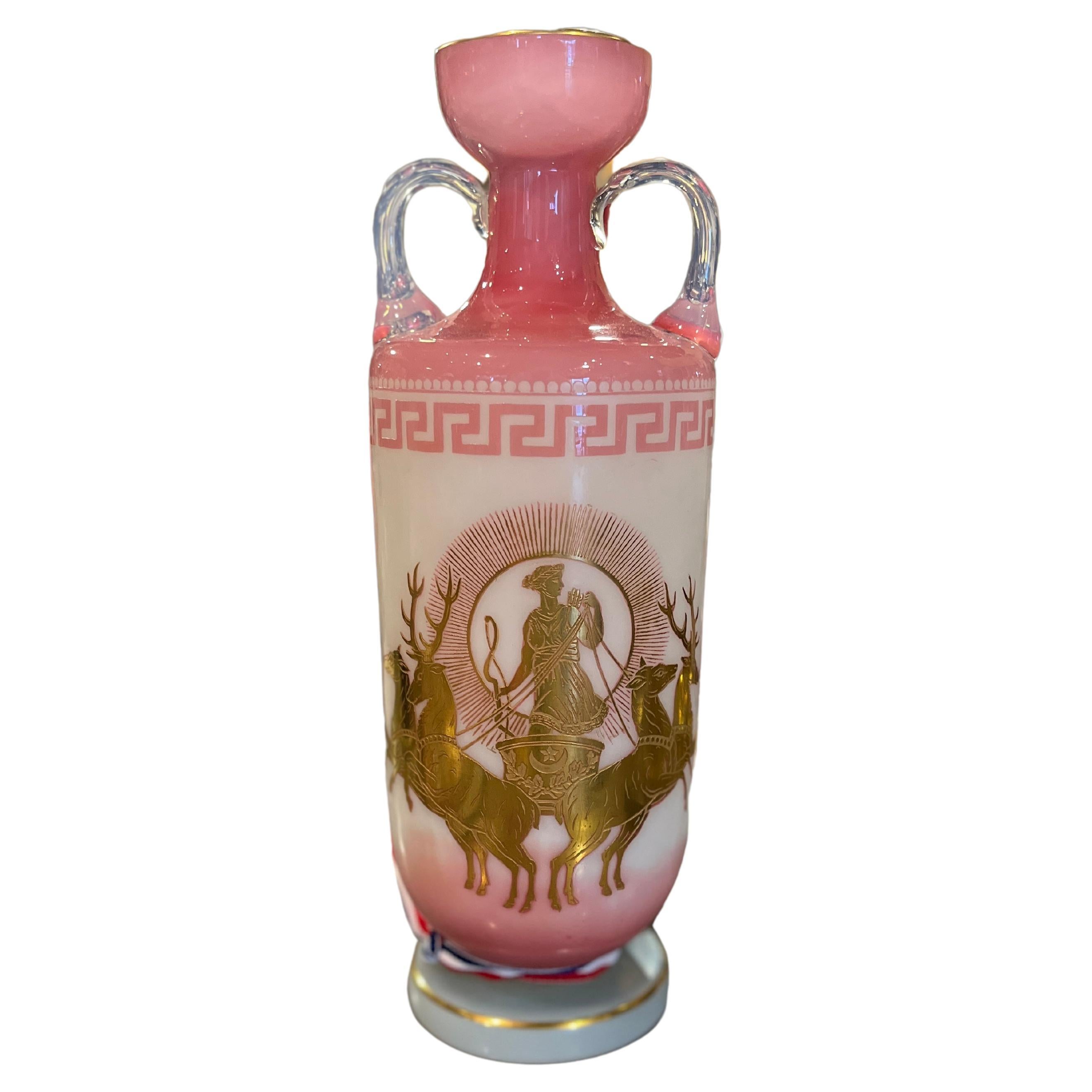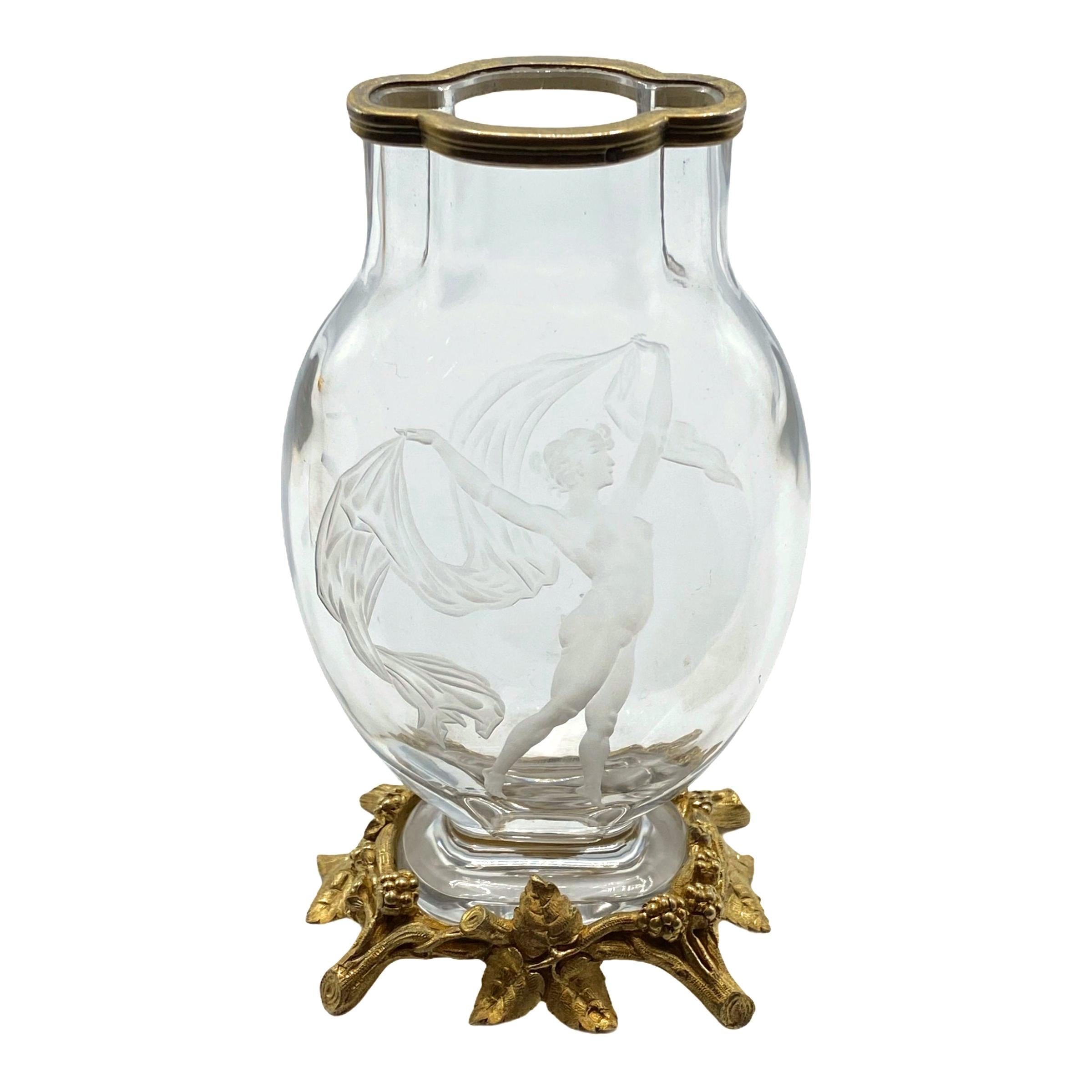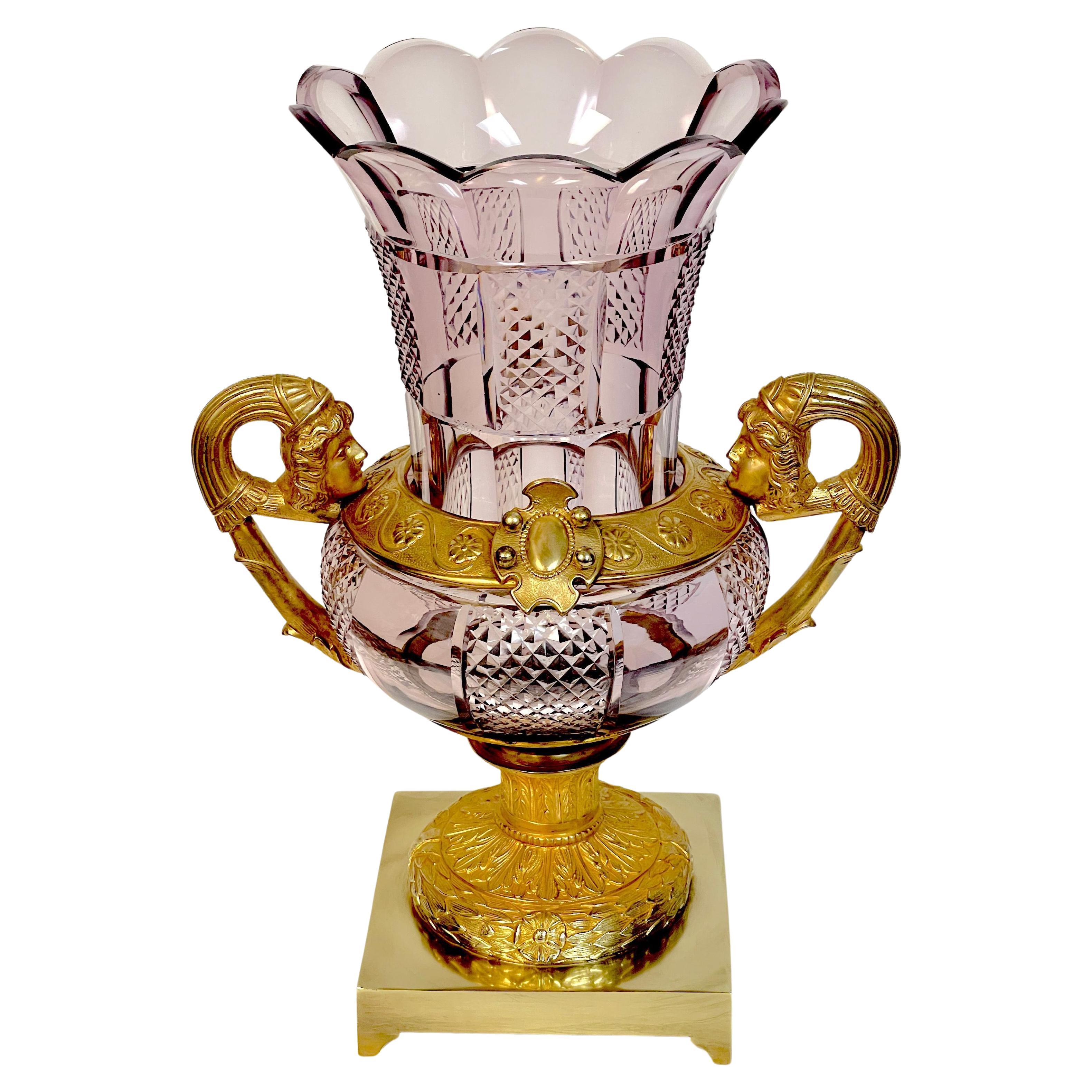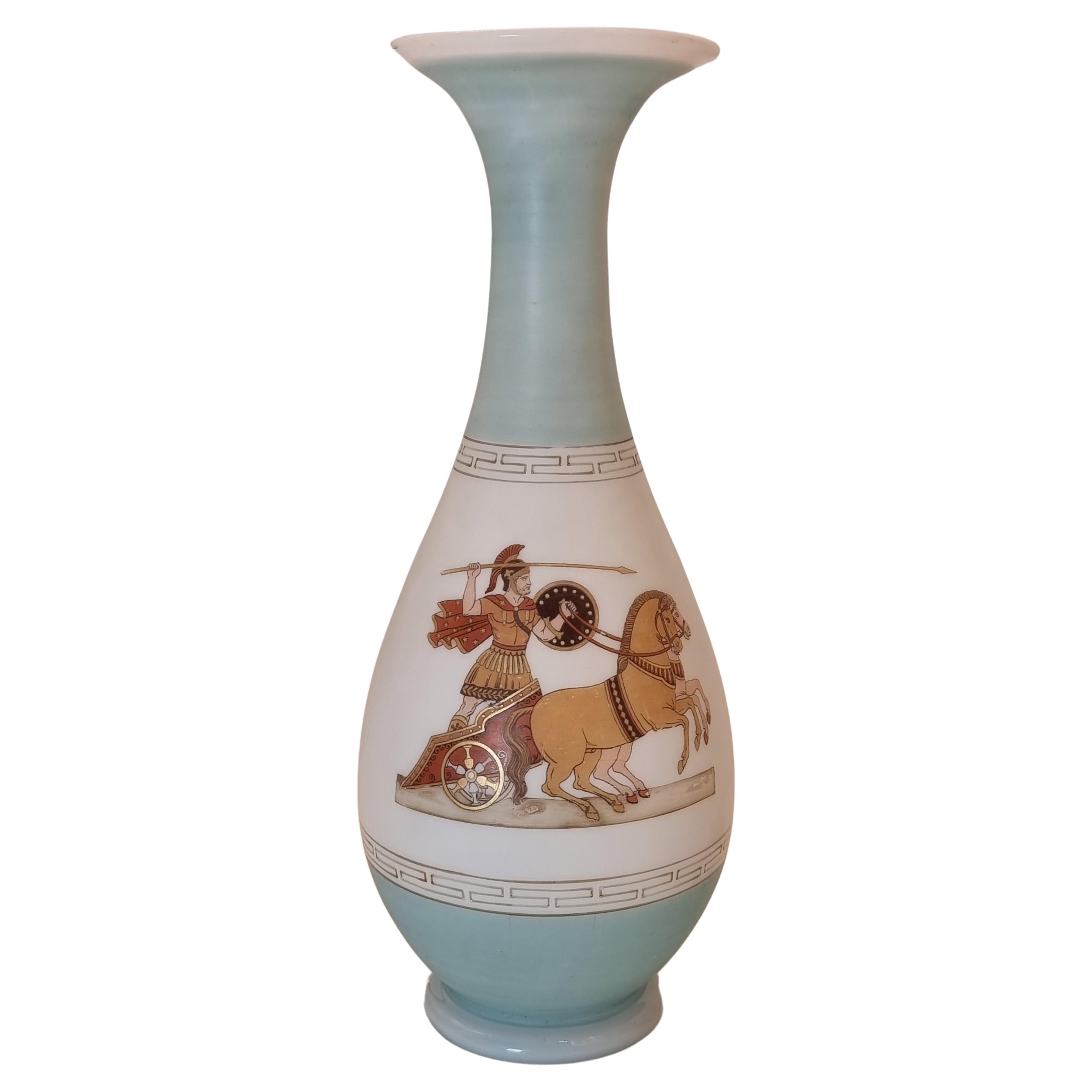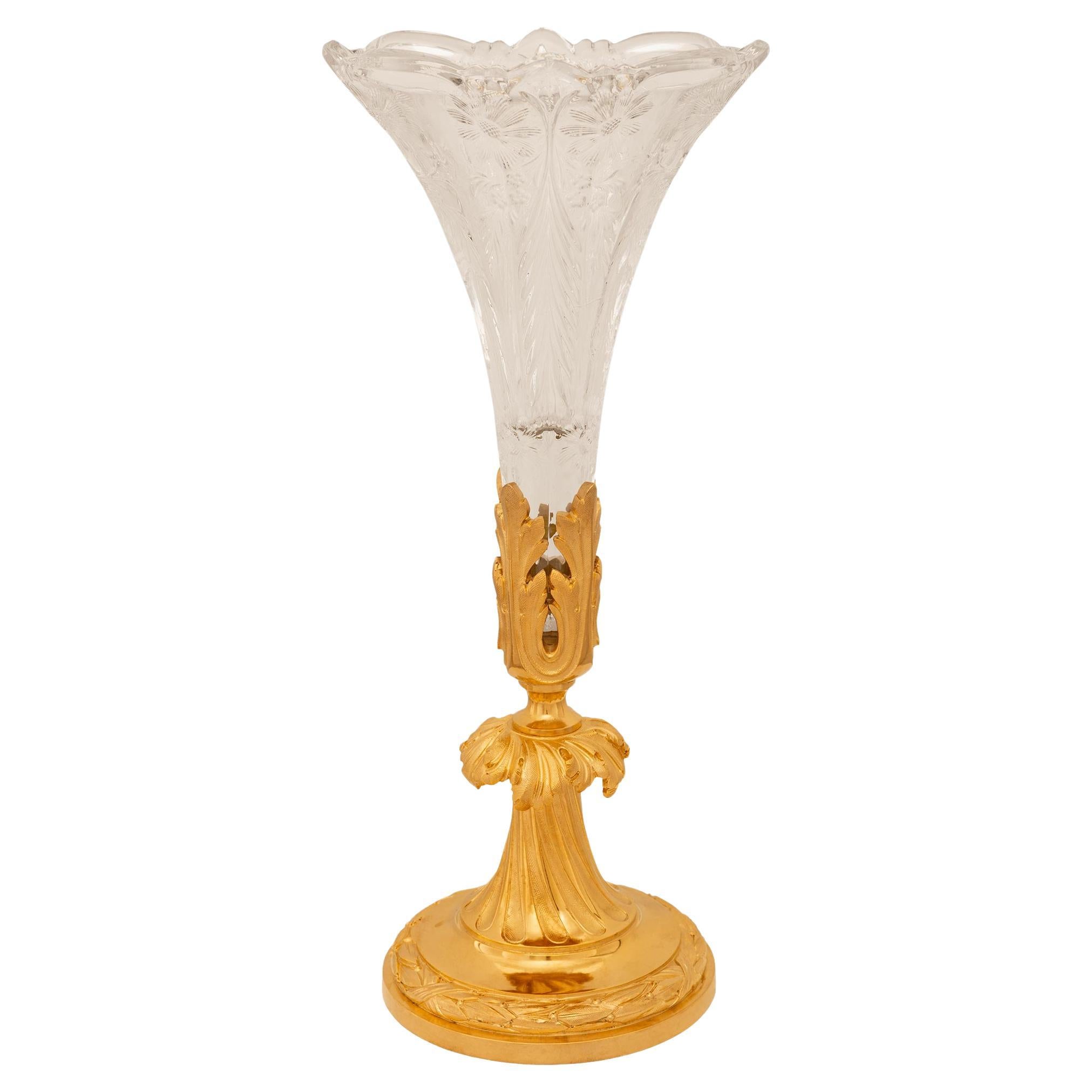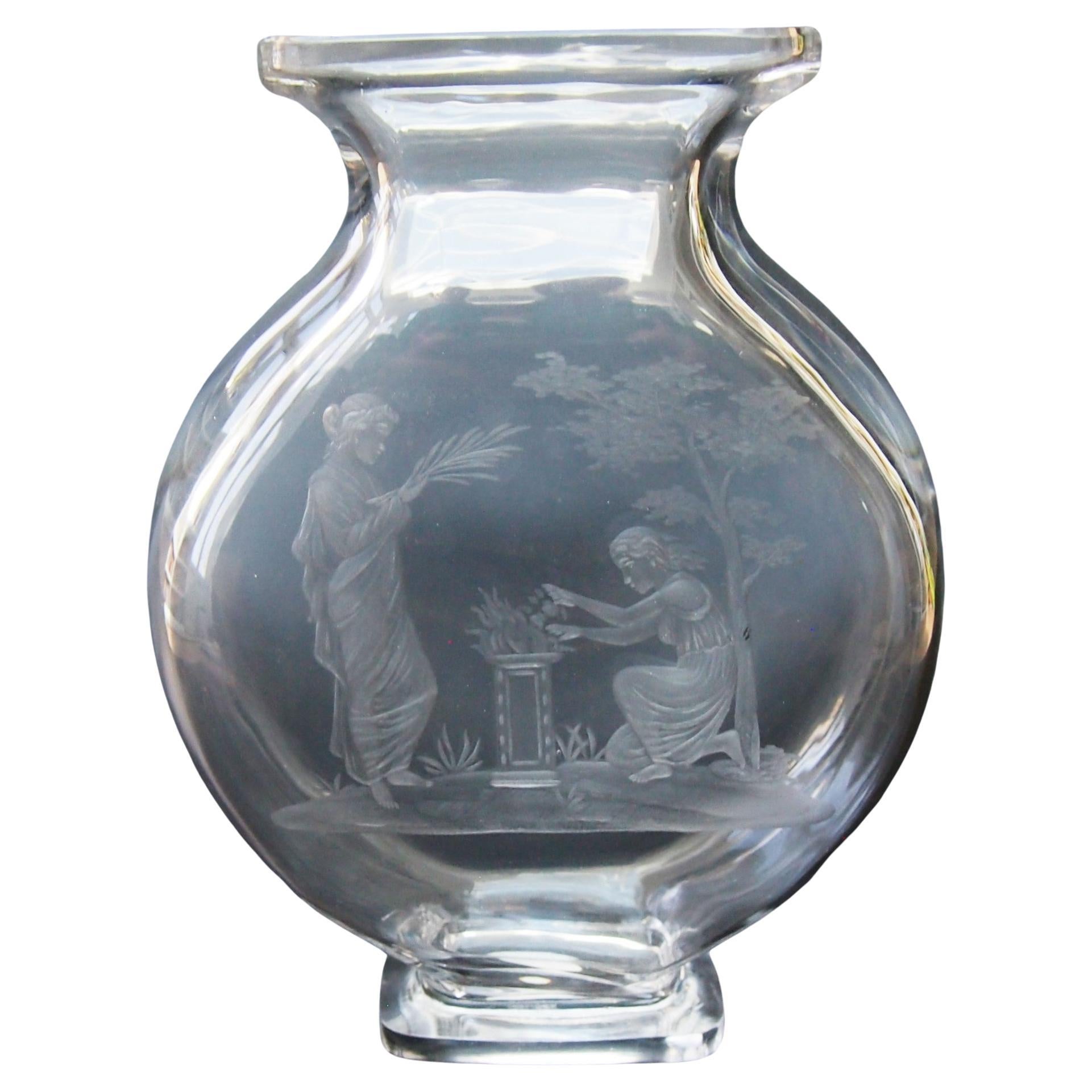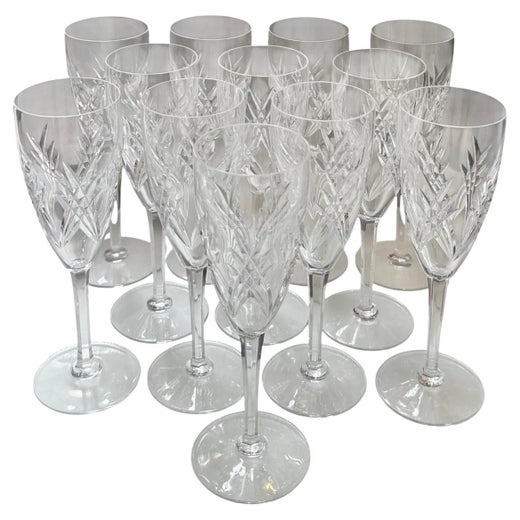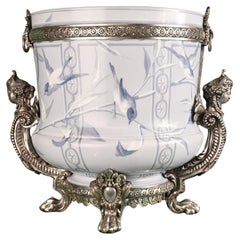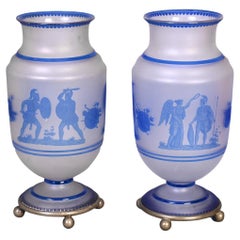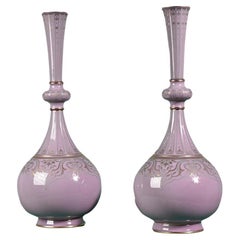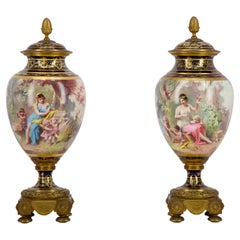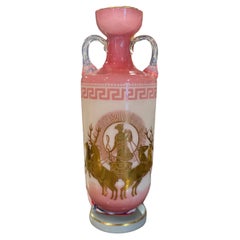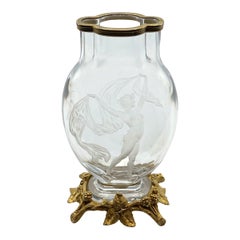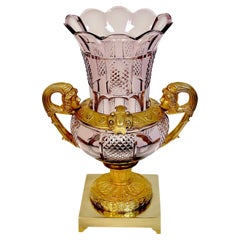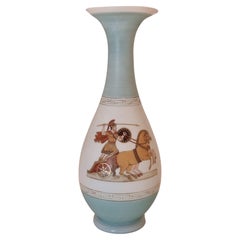BACCARAT, Neo-Greek Crater-Shaped Vase in Doubled and Acid-Etched Crystal
About the Item
- Creator:Baccarat (Manufacturer)
- Dimensions:Height: 9.85 in (25 cm)Width: 12.21 in (31 cm)Depth: 9.85 in (25 cm)
- Style:Greek Revival (Of the Period)
- Materials and Techniques:Crystal,Etched
- Place of Origin:
- Period:
- Date of Manufacture:Between 1864 and 1867
- Condition:
- Seller Location:SAINT-OUEN-SUR-SEINE, FR
- Reference Number:Seller: 131711stDibs: LU7662240322182
Baccarat
One of the world’s foremost crystal manufacturers, Baccarat has long been emblematic of luxury and exquisite craftsmanship. Starting in the early 19th century, objects produced by the French company — from stemware to chandeliers to brightly colored paperweights — became a staple of noble and wealthy households across Europe and as far afield as India. Along with the purity and quality of their glass, Baccarat crystal makers can boast a remarkable fluency with a range of design styles — from cut-glass neoclassical pieces to sinuously etched Art Nouveau designs.
Baccarat began as a kind of industrial development project. In 1764, the Bishop of Metz and other landowners in heavily forested northeastern France persuaded Louis XV to sanction a glassworks in the area — timber being a key resource required for the furnaces used in glass production.
In its early years the company produced humble products such as window panes and simple drinking glasses. In 1816 a new owner began making crystal, and seven years later Louis XVIII — who had taken the throne after the defeat of Napoleon — gave Baccarat its first royal commission, for tableware. In the ensuing years, an estimated one-third of the company’s workforce was dedicated to commissions to the Russian imperial court alone.
Spurred by the intense competition between global industries in the latter 19th century — fought in public view in the many world expositions of the era — Compagnie des Cristalleries de Baccarat, as it had finally become known, elevated its level of artistry by adopting new technologies and creating a rigorous training program. The firm broadened its stylistic range, embracing Asian influences and new engraving methods, and increasing production of its now iconic millefiori paperweights.
The designer Georges Chevalier, who worked for Baccarat for more than five decades beginning in 1916, ushered the company into the realm of modernist design. In recent years, Baccarat has employed such renowned contemporary designers as Philippe Starck and Marcel Wanders, ensuring that Baccarat crystal will continue to enjoy pride of place on up-to-date tables. But as you will see from the offerings on these pages, Baccarat has items to suit any taste.
Find antique Baccarat decanters, vases, candle holders, chandeliers and other furnishings and objects for sale on 1stDibs.
- ShippingRetrieving quote...Shipping from: SAINT-OUEN-SUR-SEINE, France
- Return Policy
More From This Seller
View AllAntique Late 19th Century French Napoleon III Vases
Opaline Glass
Antique Mid-19th Century French Classical Greek Vases
Glass
Antique 1870s French Napoleon III Vases
Porcelain
Antique 19th Century French Napoleon III Vases
Bronze
Antique 1860s French Renaissance Revival Vases
Bronze
Antique 19th Century French Napoleon III Vases
Bronze
You May Also Like
Antique 19th Century French Louis XVI Vases
Opaline Glass
Antique 19th Century French Art Nouveau Vases
Crystal, Sterling Silver
Antique Mid-19th Century Russian Neoclassical Vases
Ormolu
Antique Mid-19th Century French Classical Greek Glass
Glass
Antique Late 19th Century French Louis XVI Vases
Crystal, Ormolu
Antique 1880s French Aesthetic Movement Glass
Crystal
